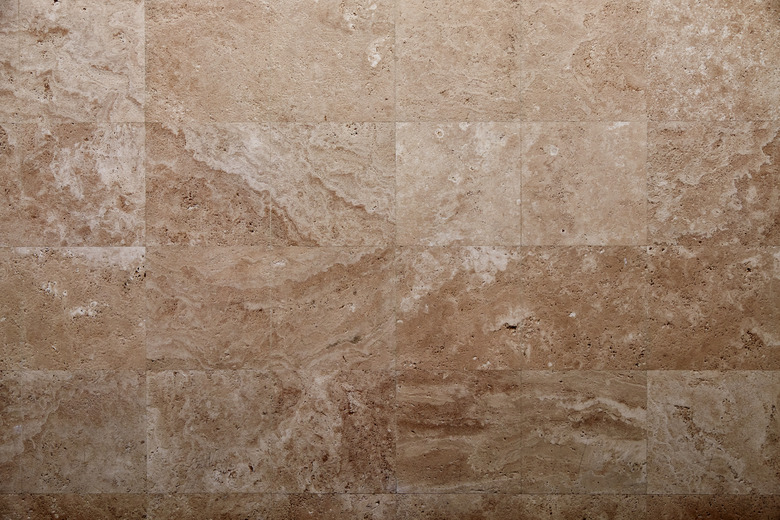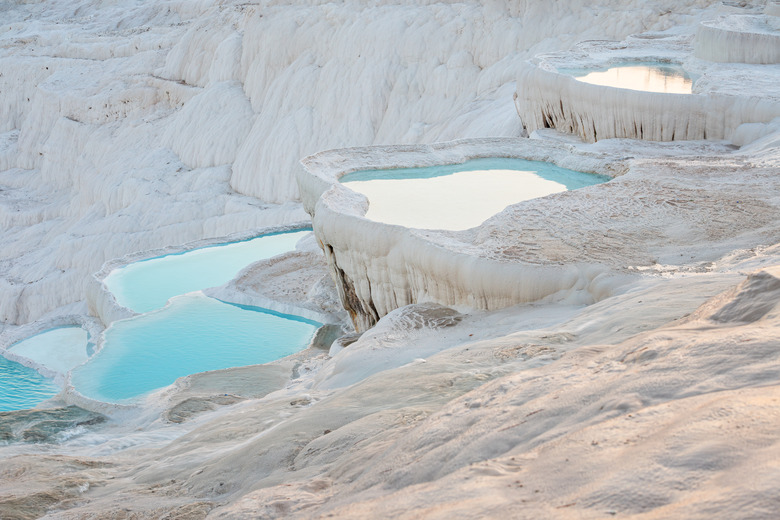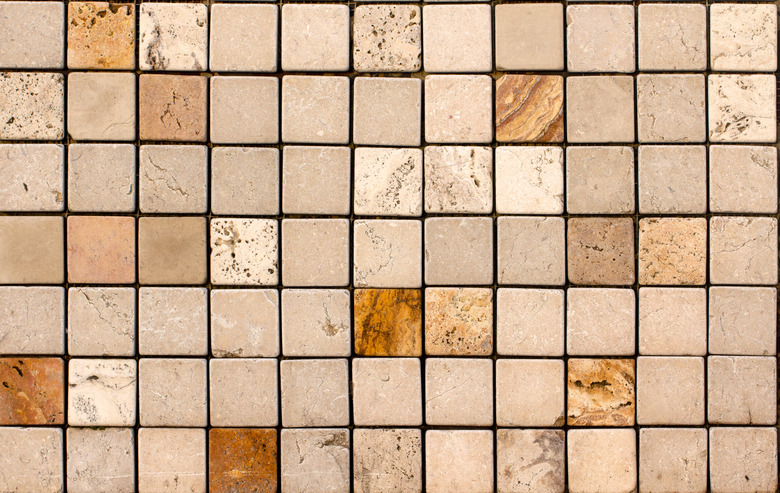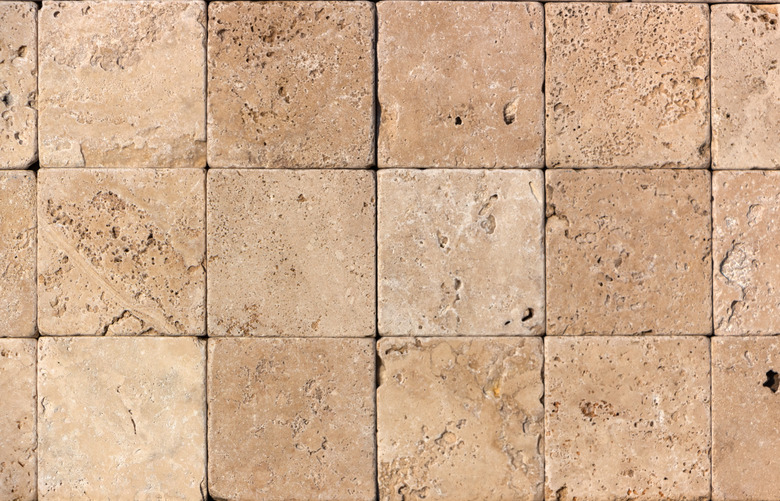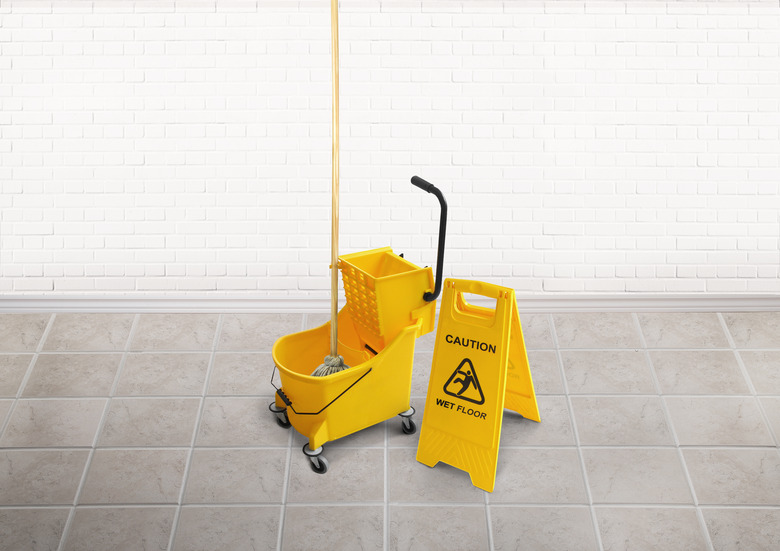Travertine Flooring: What You Need To Know
Travertine tile, a form of natural stone cut to shape, offers the look of a luxurious floor at a lower cost than marble. Travertine flooring comes in a range of neutral tones and tends to have a softer appearance than granite or marble. It is suitable for most rooms in the house, including the living room, kitchen, sun room, laundry room, entryway and even the bathroom. It's also a great option for spanning large areas in a home with a fairly open floor plan.
Travertine Tile Composition
Travertine Tile Composition
Travertine stone is a type of sedimentary rock made from layers of minerals and sediment deposited in the bottom of riverbeds, lakes and areas near bodies of water. The main component of travertine is calcium carbonate. Although travertine stone is sometimes confused with limestone or even called "travertine limestone," the two stone types are a bit different. Limestone is also made from minerals and sediment, but it is formed under heat and lots of pressure, making it harder than travertine. Due to the pressure and heat of its creation, limestone is considered a metamorphic rock, rather than sedimentary.
Since travertine stone is formed from layers of sediment, some of the deposits within the stone may break down over time, which is why travertine tiles are porous and have small gaps in some areas. Limestone does not. When using travertine flooring, these pores make the stone more susceptible to damage from acidic substances and chemicals unless resins are added as sealant to the tile.
The Pros to Travertine Tile Flooring
The Pros to Travertine Tile Flooring
Travertine tile offers many benefits as a material for floors, walls and backsplashes. Even ancient cultures recognized the beauty and durability of this material. Some of the most famous uses are the coliseum in Rome, a basilica in Paris and the colonnade of St. Peter's Square, also in Rome.
- Travertine stone has a natural beauty that varies from one stone to the next.
- It can look a bit like marble and is slightly harder than marble, yet is far less expensive. The cheapest travertine, which is all natural, without added resins, costs about $3 per square foot. (The most expensive travertine flooring options average $30 per square foot.)
- Traverine stone tile colors range from light and dark browns to grays and light reds, so it's easy to find a shade that suits a specific room.
- If any of the tiles break or crack, it's easy to replace them.
- The texture of unpolished travertine tile makes this tile a great option for floors where a non-slip surface is important, such as around a pool or in a bathroom.
- With proper care, travertine floors can last for generations.
- Travertine tiles are available in a number of finishes, including honed, brushed, polished and tumbled. The brushed or tumbled tiles offer the most texture or grip underfoot.
The Cons to Travertine Tile Flooring
The Cons to Travertine Tile Flooring
The same color variations and porous structure that make travertine floors unique may be considered by some to be drawbacks. With proper care, travertine is quite durable, but it does require a few extra precautions compared to vinyl or laminate flooring, for instance.
- Travertine floor tiles are easily damaged by acidic substances such as coffee, citrus juices and vinegar. Although vinegar is excellent for all-purpose household cleaning, it should never be used on travertine.
- Travertine tiles are soft enough to scratch, especially if the tiles are not sealed. Heavy, sharp items can damage the tile. Dragging heavy objects such as appliances across the floor will most likely damage the travertine.
- The resin used to fill gaps in some types of travertine tile wears out over time. This type of tile requires a new sealant every three to four years.
- Since color variations exist even across the surface of one tile, finding an ideal replacement tile may be time-consuming. You may even want to rearrange tiles during installation, if doing it yourself, for the best color consistency from one tile to the next.
Travertine Floor Installation
Travertine Floor Installation
Installing travertine flooring is much like installing other types of tile. Typically it should be installed over cementboard (tile backer) or concrete. Floor tiles are adhered with thinset adhesive. For light-colored tiles, white thinset is often recommended to prevent discoloration of the tile. Once the tiles are down and the thinset has cured fully, the joints between tiles are filled with grout, as with standard tile installation.
Because travertine can be very porous, tile suppliers often recommend sealing the tile before grouting, to prevent the grout from sticking to and/or staining the tile surfaces. Another option is to seal the top faces of the tile as the first step of the installation, before the tiles are set. This helps prevent thinset messes from staining the tile. In any case, the grout must be sealed after it cures. It's best to ask the tile supplier for recommendations on sealing the specific type of tile you choose.
Travertine Tile Floor Care
Travertine Tile Floor Care
As with most hard floor surface, a daily sweeping helps remove small bits of debris that can scratch travertine flooring. Setting rugs or doormats inside an entry door can help prevent grit and dirt from being tracked in. For cleaning, travertine floors should be mopped at least once a week with water and a pH-neutral cleaner designed specifically for soft stones such as travertine and marble. Regular floor-cleaning products and acidic liquids may cause permanent damage to the stone. Mildew or dark discolorations on the grout or tile can be removed by scrubbing with bleach and water.
Resealing Travertine Floors
Resealing Travertine Floors
Tile on floors undergoes more wear than, say, on a backsplash, and it must be resealed periodically. For travertine, expect to reseal the floor every three or four years; this could vary depending upon daily wear and tear as well as the frequency of cleaning. Travertine should be resealed when drops of water soak into the tile rather than beading up on the surface.
Stone sealers come in two basic types: enhancing and natural. The enhancing variety makes the stone darker and gives it a shiny wet look at all times. Natural sealers do not affect the look of the tile and provide a more matte finish. Sealer is typically applied in one or more coats, using a paint pad (or as recommended on the product label). The sealer must cure fully before the floor can be walked on.
References
- The Tile Shop: What is Travertine Tile?
- Travertine Mart: What is the Difference Between Travertine Tiles and Limestone?
- Sefa Stone: Travertine Tile Pros and Cons
- Tile Outlets: Six Tips on How to Install Travertine Tile
- MSI Surfaces: Travertine Tile Installation
- Tile Outlets: Why and How to Seal Travertine Tile
